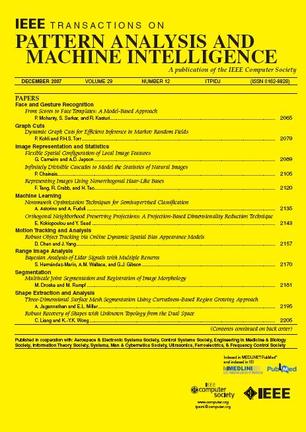物理救援:高速成像的深度非视距重建
IF 20.8
1区 计算机科学
Q1 COMPUTER SCIENCE, ARTIFICIAL INTELLIGENCE
IEEE Transactions on Pattern Analysis and Machine Intelligence
Pub Date : 2022-05-03
DOI:10.48550/arXiv.2205.01679
引用次数: 7
摘要
由于成像硬件和重建算法的重大进步,拐角成像或非视距成像(NLOS)的计算方法正在成为现实。Nam等人展示了一种高速非共聚焦成像系统,其工作频率为5hz,比现有技术快100倍。然而,这种获取率的巨大提高需要在光传输中进行大量近似,打破了许多假设理想图像形成模型的现有NLOS重建方法。为了弥补这一差距,我们提出了一种新的深度模型,该模型将波传播和体渲染的互补物理先验知识整合到神经网络中,以实现高质量和鲁棒的NLOS重建。这种精心设计通过放松图像形成模型来正则化解决方案空间,从而产生一个深度模型,尽管只在合成数据上进行训练,但它可以很好地泛化真实捕获。此外,我们设计了一个统一的学习框架,使我们的模型能够灵活地使用不同的监督信号进行训练,包括目标强度图像甚至原始NLOS瞬态测量。经过训练后,我们的模型在单个向前传递的推理时间内呈现强度和深度图像,能够在高端GPU上每秒处理超过5次捕获。通过广泛的定性和定量实验,我们表明我们的方法在合成和实际测量上都优于先前的基于物理和学习的方法。我们预计,我们的方法以及快速捕获系统将加速NLOS成像的未来发展,以满足需要高速成像的现实世界应用。本文章由计算机程序翻译,如有差异,请以英文原文为准。
Physics to the Rescue: Deep Non-line-of-sight Reconstruction for High-speed Imaging
Computational approach to imaging around the corner, or non-line-of-sight (NLOS) imaging, is becoming a reality thanks to major advances in imaging hardware and reconstruction algorithms. A recent development towards practical NLOS imaging, Nam et al. [1] demonstrated a high-speed non-confocal imaging system that operates at 5 Hz, 100x faster than the prior art. This enormous gain in acquisition rate, however, necessitates numerous approximations in light transport, breaking many existing NLOS reconstruction methods that assume an idealized image formation model. To bridge the gap, we present a novel deep model that incorporates the complementary physics priors of wave propagation and volume rendering into a neural network for high-quality and robust NLOS reconstruction. This orchestrated design regularizes the solution space by relaxing the image formation model, resulting in a deep model that generalizes well on real captures despite being exclusively trained on synthetic data. Further, we devise a unified learning framework that enables our model to be flexibly trained using diverse supervision signals, including target intensity images or even raw NLOS transient measurements. Once trained, our model renders both intensity and depth images at inference time in a single forward pass, capable of processing more than 5 captures per second on a high-end GPU. Through extensive qualitative and quantitative experiments, we show that our method outperforms prior physics and learning based approaches on both synthetic and real measurements. We anticipate that our method along with the fast capturing system will accelerate future development of NLOS imaging for real world applications that require high-speed imaging.
求助全文
通过发布文献求助,成功后即可免费获取论文全文。
去求助
来源期刊
CiteScore
28.40
自引率
3.00%
发文量
885
审稿时长
8.5 months
期刊介绍:
The IEEE Transactions on Pattern Analysis and Machine Intelligence publishes articles on all traditional areas of computer vision and image understanding, all traditional areas of pattern analysis and recognition, and selected areas of machine intelligence, with a particular emphasis on machine learning for pattern analysis. Areas such as techniques for visual search, document and handwriting analysis, medical image analysis, video and image sequence analysis, content-based retrieval of image and video, face and gesture recognition and relevant specialized hardware and/or software architectures are also covered.

 求助内容:
求助内容: 应助结果提醒方式:
应助结果提醒方式:


